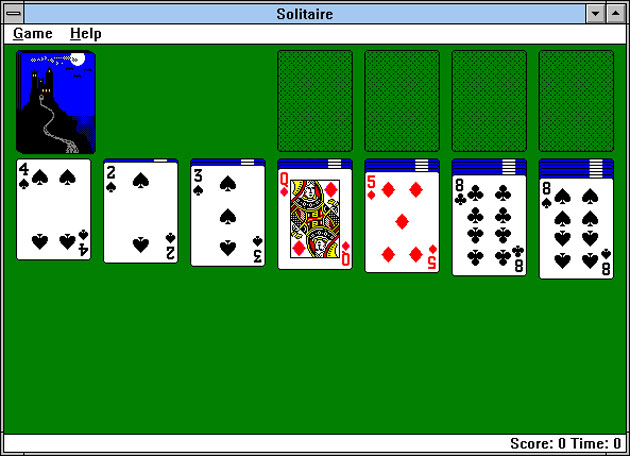


So, what you thought was a game to entertain you was actually a mechanism to check whether the software was working properly or not. Are you wondering how FreeCell helped in that testing? If the thunking layer was improperly installed on the Windows device, the FreeCell game wouldn’t actually run. The real purpose of the game was to test the 32-bit thunking layer. Lastly, we have FreeCell, which was rolled out for Windows 3.1. This is the reason why the game was originally named “The Microsoft Hearts Network”. When playing the game, the users could see multiple players playing the same game using the computer network. Windows for Workgroups 3.1 was the first Windows version that was network ready. Hearts, which is another popular Microsoft game, was added in Windows for Workgroups 3.1 in the year 1992 for flaunting the networking capabilities of the computer system. Minesweeper was added to make the users familiar with the left and right-clicking mechanism with precision using the mouse. If you have guessed that the real purpose was again not to provide a form of entertainment, you are right. Later, in 1992, Microsoft introduced Minesweeper in Windows 3.1. Originally, this logic-based game came into the picture around the 1960s-1970s and was popularly known as “Cube” and Jerimac Ratliff created the game.
#Microsoft klondike classic solitaire Pc#
Minesweeper was also added to Microsoft Windows PC with the same intention. Also, at a point, Solitaire became a point of concern because the companies were losing business productivity as the employees used to play these games a lot, reducing their actual working hours. According to Microsoft telemetry, Solitaire was so popular among Windows users that it is ranked one of the three most used Windows games and even surpassed Word and Excel. Even today, we need to keep on dragging and dropping and this tells us that Microsoft was indeed a visionary company. In Solitaire, the player has to drag and drop the cards and Microsoft wanted to teach this to the Windows users in a fun way so that it doesn’t even feel like the users are actually learning something. Solitaire was made available in Microsoft Windows with the intention that it will make the Windows users familiar with the command-line input. Later, Microsoft also added Hearts, Minesweeper and FreeCell. However, Microsoft popularised its digital version and showed the world that you do not need a physical card deck actually to play a card game. The game existed in the offline world too in the late 1700s. The game was made available on Windows 3.0, which was rolled out in 1990. The first game to be introduced in Microsoft Windows was Solitaire.


 0 kommentar(er)
0 kommentar(er)
